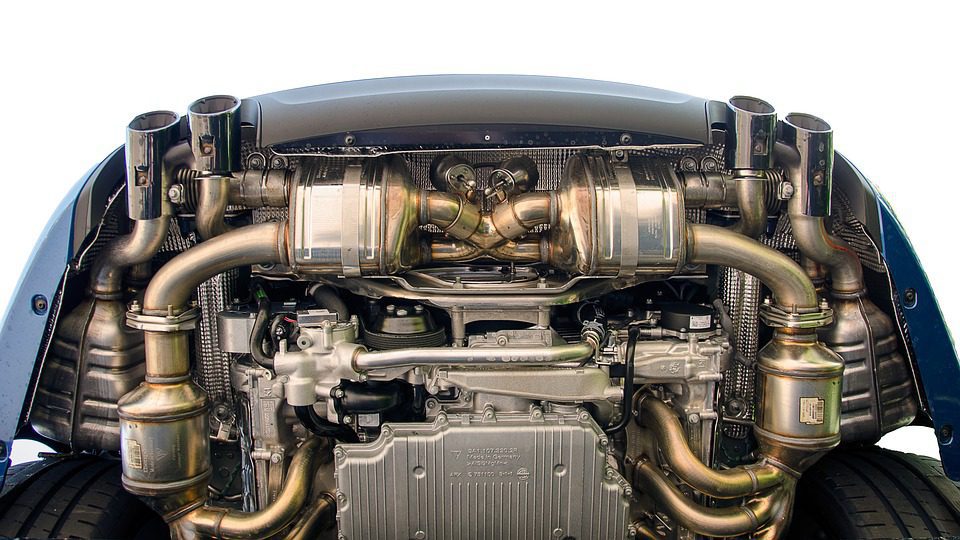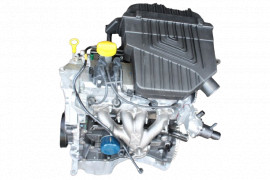Efficient and Effective Little Vehicle Electric Motor Performance Analysis
Analyzing the efficiency of tiny auto motors is a nuanced task that needs an eager eye for information and a deep understanding of automotive engineering principles. By analyzing crucial metrics such as horse power and torque, as well as reviewing gas efficiency, we can uncover insights into just how tiny vehicle engines can be enhanced for peak efficiency.

Small Auto Electric Motor Performance Metrics
In analyzing the performance of little cars and truck electric motors, vital metrics such as velocity, gas efficiency, and power output play a vital duty in establishing their overall effectiveness and viability for various driving problems. Velocity, gauged in secs from 0 to 60 miles per hour, shows just how quickly a little cars and truck can reach greater speeds, which is important for merging onto highways or surpassing other lorries. Fuel performance, typically determined in miles per gallon (MPG), mirrors exactly how much a small cars and truck can take a trip on a gallon of gas, impacting running prices and environmental sustainability. Power result, expressed in horsepower (HP) or kilowatts (kW), indicates the engine's ability to create the required pressure to push the car, influencing its performance in different road conditions. By examining these performance metrics comprehensively, makers, vehicle drivers, and automotive enthusiasts can make enlightened decisions pertaining to the choice and optimization of small auto electric motors to meet their particular requirements and choices.

Horse Power and Torque Analysis
With a fundamental function in recognizing small cars and truck motor horse power, torque and performance analysis supplies understanding into the engine's power shipment characteristics. Horsepower is a dimension of the engine's capacity to do work over time, representing the price at which job is done. In the context of small automobile electric motors, horse power is essential for figuring out velocity, top speed, and general efficiency. Torque, on the various other hand, gauges the engine's rotational force, indicating its capability to get rid of resistance. Tiny car engines with higher torque values usually really feel extra receptive and provide better acceleration, making them optimal for city driving and surpassing maneuvers. When assessing horsepower and torque in little vehicle electric motors, it is vital to take into consideration just how these metrics connect to deliver a balanced and effective driving experience. By comprehending the connection between horse power and torque, auto designers can maximize engine efficiency to satisfy the certain demands of little automobile applications.
Fuel Efficiency Analysis
The examination of fuel performance in small auto motors plays an important role in establishing their environmental and financial impact. Gas efficiency describes the ability of an automobile to utilize fuel properly in regard to the distance took a trip. In small auto motors, where small dimension typically associates with better gas economy, different variables influence effectiveness. Engine layout, weight, aerodynamics, and driving conditions all add to how efficiently gas is eaten.
Tiny cars and truck electric motors that accomplish higher MPG ratings are thought about extra fuel-efficient, resulting in price financial savings for drivers and lowered exhausts that profit the setting. Makers constantly strive to boost gas effectiveness through innovations in engine modern technology, lightweight materials, and aerodynamic styles.

Enhancing Small Vehicle Engine Performance
Enhancing the effectiveness of tiny cars and truck engines is paramount in making the most of performance and reducing operational expenses. Enhancing small auto engine efficiency involves an all natural technique that considers numerous elements such as engine design, gas management systems, and view publisher site general car dynamics. One essential facet of enhancing engine efficiency is making sure proper upkeep schedules are adhered to, including routine oil changes, filter substitutes, and spark plug inspections. In addition, adjusting the engine to operate at its peak effectiveness can considerably boost overall performance.
An additional critical consider optimizing tiny cars and truck engine efficiency is the use of innovative modern technologies such official source as turbocharging or crossbreed systems. These technologies can boost power outcome without compromising gas efficiency, supplying a balance in between efficiency and economic climate. Maximizing engine performance additionally involves improving burning efficiency, minimizing frictional losses, and improving thermal administration systems.
Future Trends in Small Automobile Motors
Because of advancing vehicle modern technologies and the continuous quest of optimum small cars and truck engine efficiency, an exploration of future patterns in little car motors ends up being vital - opel corsa engine. One prominent fad on the horizon is the enhancing combination of electrical powertrains in tiny vehicles. As the vehicle market changes in the direction of sustainability and reduced emissions, more little cars and truck suppliers are buying electrical motor technology to enhance efficiency and environmental friendliness
One more considerable pattern is the advancement of smaller yet a lot more effective turbocharged engines for little cars and trucks. By scaling down engine abilities and including turbocharging modern technology, car manufacturers can attain greater power results while keeping gas effectiveness. This pattern lines up with the growing consumer demand for tiny cars that supply a vibrant driving experience without endangering on gas economic climate.
Furthermore, the development of hybrid powertrains in small cars is anticipated to obtain grip in the future. Hybrid systems offer the advantages of both inner burning engines and electric motors, providing better efficiency and fuel efficiency. As advancements in battery modern technology navigate to these guys proceed, little vehicle electric motors are most likely to become even extra effective and reliable, catering to the evolving demands of consumers and governing needs for cleaner transport remedies.
Verdict
To conclude, the evaluation of tiny auto motor efficiency metrics such as horse power, fuel, and torque performance is necessary in optimizing engine performance. By assessing these elements, suppliers can enhance the total effectiveness and power result of little car electric motors (opel corsa engine). Future trends in little car motors are most likely to concentrate on improving efficiency while maintaining gas performance, guaranteeing that tiny automobiles remain to be a economical and trustworthy selection for consumers
By taking a look at crucial metrics such as horsepower and torque, as well as evaluating gas performance, we can discover understandings into exactly how tiny vehicle engines can be enhanced for peak efficiency. Optimizing little auto engine performance includes an all natural approach that considers different aspects such as engine layout, gas management systems, and general automobile characteristics.In light of advancing automobile innovations and the constant quest of ideal tiny auto engine performance, an expedition of future patterns in little auto electric motors becomes critical.In conclusion, the evaluation of little car electric motor efficiency metrics such as gas, torque, and horse power effectiveness is vital in optimizing engine efficiency. Future patterns in tiny auto electric motors are likely to concentrate on improving performance while preserving gas efficiency, making sure that small cars and trucks continue to be a trustworthy and economical option for customers.